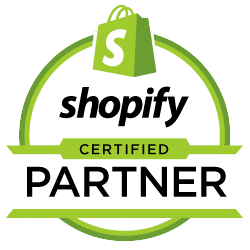Imagine knowing exactly what your customers want, even before they do. This isn’t a superpower. It’s the result of using first party data effectively. As we move through 2025, understanding and using this information is no longer just an option for small businesses; it’s the key to survival and growth. This article will show you what first party data is, why it’s so valuable, and how you can start using it to build stronger customer relationships and boost your sales.
What Exactly Is First Party Data?
First party data is the information you collect directly from your audience and customers. It’s your own data. You own it, you control it, and it comes straight from the source. This makes it incredibly accurate and relevant.
Think about the information you gather every day. This includes:
- Contact Information: Names, email addresses, and phone numbers from newsletter signups or contact forms.
- Purchase History: What products or services people buy, how often they buy, and how much they spend.
- Website Behavior: Which pages people visit on your site, how long they stay, and what actions they take.
- App Usage: How customers interact with your mobile application.
- Survey Responses: Direct feedback you get from customer satisfaction surveys or polls.
This is different from second or third party data. Second party data is someone else’s first party data that you buy. Third party data is collected by companies that don’t have a direct relationship with the user, often through cookies, and sold to many buyers. With growing privacy concerns and the end of third party cookies, relying on your own data is more important than ever.
Why Your Business Needs to Focus on First Party Data
Collecting information directly from your customers is like building a relationship on trust. They give you their information because they see value in what you offer. This creates a powerful foundation for your marketing efforts.
Build Deeper Customer Connections
When you use first party data, you show your customers that you are listening. You can stop sending generic messages and start creating personalized experiences.
For example, a local coffee shop notices a customer always buys a specific type of latte through their app. Instead of sending a general promotion, they can send a personalized offer for that exact drink. This small gesture makes the customer feel seen and valued, encouraging them to come back again and again. It changes the dynamic from a simple transaction to a genuine connection.
Improve Your Marketing ROI
Targeted marketing is efficient marketing. When you know who you are talking to, you waste less money on ads that don’t convert. First party data allows you to create very specific audience segments.
Let’s say you own an online clothing store. By looking at purchase history, you can create a segment of customers who have only bought men’s jeans. When you launch a new line of men’s shirts, you can target this specific group. Your conversion rate will be much higher because you are showing a relevant product to an interested audience. This precision means a better return on your investment for every marketing dollar you spend.
Prepare for a Cookieless Future
Major web browsers are phasing out third party cookies. This means the old way of tracking users across different websites is ending. Businesses that have relied on third party data for their advertising will soon be scrambling for a new solution.
If you build your first party data strategy now, you will be ahead of the curve. You won’t need to worry about these industry changes because you will have your own reliable source of customer insights. You are essentially future proofing your marketing strategy by owning your data.
How to Start Collecting First Party Data
Starting your collection of first party data doesn’t need to be complex. You can begin with simple tools and methods. The key is to always provide value in exchange for the information you ask for.
Optimize Your Website
Your website is a powerful tool for data collection. Make sure it’s easy for visitors to share their information with you.
- Newsletter Signups: Offer a discount, a free guide, or exclusive content to encourage people to subscribe to your email list. Place the signup form in visible locations, like your homepage and blog.
- Contact Forms: Keep your contact forms simple. Only ask for the information you truly need to reduce friction.
- Account Creation: If it makes sense for your business, allow users to create accounts. This lets you track their purchase history and preferences over time.
Engage With Email Marketing
Email is a direct line to your audience. Use it to build relationships and gather information.
- Welcome Series: When someone signs up, send a series of welcome emails. Ask them about their preferences so you can segment them from the start. A pet store, for instance, could ask if they own a dog or a cat.
- Surveys and Polls: Regularly ask for feedback. Use simple one question polls or more detailed surveys to understand what your customers think about your products, services, and content.
Leverage Your Social Media
Your social media channels are great for engagement and data collection.
- Run Polls: Use Instagram Stories, Twitter, or Facebook to run polls. Ask your followers about their favorite products or what they want to see next. This is an easy and fun way to gather preference data.
- Host Contests: Run a giveaway that requires an email address for entry. This can quickly grow your email list with an engaged audience.
Putting Your Data into Action
Collecting data is only the first step. The real magic happens when you use it to create better experiences for your customers.
Start by personalizing your communications. Use your customer’s name in an email. Recommend products based on their past purchases. Send them a special offer on their birthday. These small, personalized touches can make a huge difference in how customers perceive your brand.
You can also use the data to refine your products and services. If you notice from survey feedback that many customers are asking for a specific feature or product, you know there is real demand for it. This data driven approach to business development reduces risk and increases your chances of success.
Your first party data is a valuable asset that can transform your business. By collecting it ethically and using it wisely, you can build a more resilient, profitable, and customer focused company. The gold rush of 2025 is here, and it’s all about the data you own.
We Want To Talk To You About Your Marketing Goals.
Let’s Supercharge Your Online Growth!












